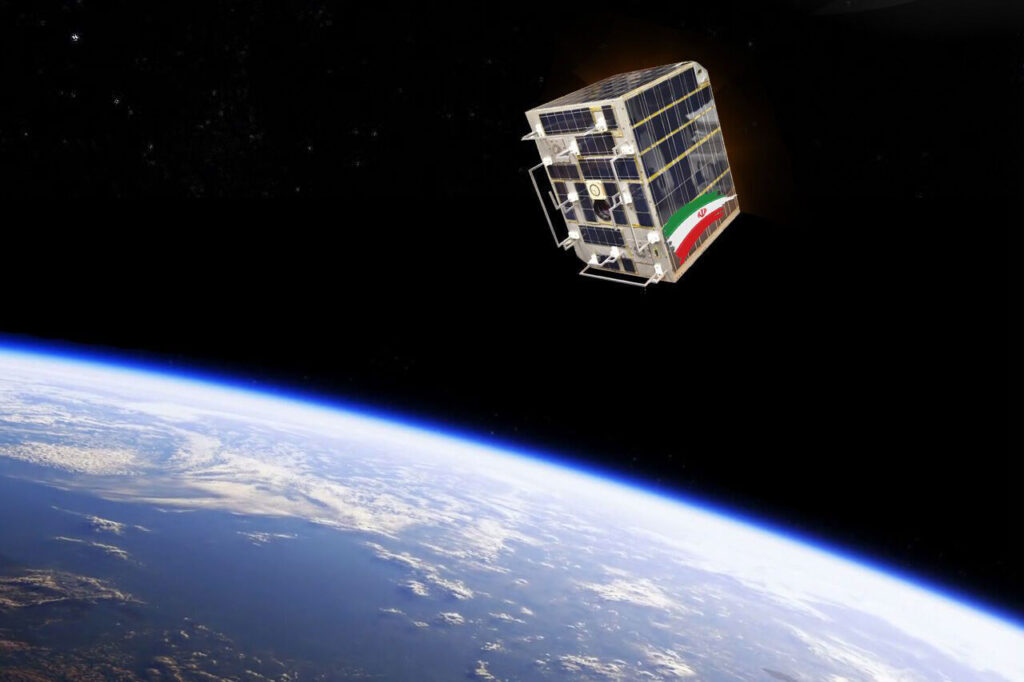By Rabbi Yair Hoffman for 5tjt.com
The world is about to enter a new era that we can call, “ASAT Wars.” It is an era that military think-tanks knew we would eventually get to, but who knew that it would come upon us so fast? [ASAT, by the way, stands for anti-satellite technology – a technology still in it’s infancy.] This article is divided into two parts – the first is a discussion of how we got here and ASAT technology and the second is a discussion of the underlying halachic topic.
THE BACKGROUND
How did we get here? Russia, formerly on friendly terms with the State of Israel, did something that gives new meaning to the term “stabbing in the back.” They helped build and launch a spy satellite for Iran – a country that has openly said that they plan the destruction of Israel. And Iran isn’t just saying it – they are the ones providing all the rockets that are being shot into Israel – whether from PIJ,HAMAS in Gaza or by Hezbollah toward the north.
The satellite is named, “Khayyam” – after a 12th-century Persian mathematician who was known for unifying the fields of algebra and geometry. Of course, Iran is saying that the satellite was launched in order to help the environment. But the fact of the matter is that this satellite launch places Israel in grave danger as it includes a high-resolution camera that gives it continuous monitoring of all of Israel and also the Middle-east. This places Israel, and Ukraine, and the moderate Arab neighbors of Iran in the category of, “Habah l’harg’cha Hashkaim l’hargo – if someone is coming to kill you, wake up early.”
This satellite has the potential to give Iran the ability to pinpoint specific targets in Israel and to give over that information to its proxies. It is a game-changer, for the enemy, Heaven forbid. It also has world-wide repercussions in that Russia will probably be using it to bring Ukraine to its knees. And the entire middle-east is now fearful that Iran will use it to expand around them as well.
THE SATELLITE NEEDS TO COME DOWN
There is no question that this satellite needs to come down. The problem is that only China, India, Russia, and the United States have successfully used anti-satellite tech, and have only done it on their own obsolete satellites. The good news is that Israel has something called the Chetz III (Chetz means “arrow” in Hebrew). The Chetz III is a missile that is capable of taking down satellites and was jointly funded and developed by Israel’s Israel Aerospace Industries (IAI) and the United States (specifically Boeing). Israel, the United States, Europe, and the Arab World all need to join forces to bring down the satellite. And now is the time to do it.
Will such a move precipitate an exo-atmospheric international cold war? Probably. But, nonetheless, it must be done because human life is at stake here.
THE SOURCE FOR PERMITTING SUCH A MOVE
There are actually three different sources that allow for such a rescue of human life. Two of them are based on a Gemorah in Sanhedrin, and the third source is found in the Rambam.
The Braisah cited in Sanhedrin (73a) asks: From where is it derived that with regard to one who pursues another in order to kill him, the pursued party may be saved at the cost of the pursuer’s life? The verse states: “You shall not stand idly by the blood of another” (Leviticus 19:16); rather, you must save him from death. The Gemara asks: But does this verse really come to teach us this? This verse is required for that which is taught in a baraita: From where is it derived that one who sees another drowning in a river, or being dragged away by a wild animal, or being attacked by bandits [listin], is obligated to save him? The Torah states: “You shall not stand idly by the blood of another.” The Gemara answers: Yes, it is indeed so that this verse relates to the obligation to save one whose life is in danger.
The Gemara asks again: But from where do we derive that one may be saved at the cost of the pursuer’s life? The Gemara answers: It is derived by means of an a fortiori inference from the halakha governing a betrothed young woman who was assaulted by a predator: If in the case of a betrothed young woman, whom the predator comes only to degrade, i.e., the result of the activity will be that her status is lowered, the Torah said that she may be saved even at the cost of the predator’s life, then in the case of one who pursues another person to kill him, “all the more so” should one say that he may be saved even at the cost of the predator’s life.
The Gemorah further questions, how can one punish only through an “all the more so” argument – we have a principle that we cannot punish simply by an “all the more so” argument! The Gemorah answers that this is also a Hekesh – a type of law where one law is derived from another set of laws through a Torah “hyperlink” – so to speak, between a would be murderer and an engaged damsel.
The Gemorah then asks what the source is for the engaged damsel itself from which the derivative law of would be murderers is derived. The Gemorah answers from the school of Rabbi Yishmael who taught that the verse, “and she has no rescuer for her” we can infer that if she does have a rescuer – you may do anything else to save her.
We thus have two sources from this Gemorah:
- The verse of “Do not stand idly by your brother’s blood.”
- A specific law regarding a pursuer that is derived through a biblical hyperlink (a Hekesh).
There is a third source too. The Rambam (Hilchos Rotzayach 1:7) uses a verse from Dvarim (25:12), “You shall cut off her hand – you shall not have pity” (regarding a woman who raises the stakes in a fight) – rather than the two sources discussed in the Gemorah. The Raavad explains that the Rambam’s source is the Sifrei on that verse. The Sefer HaMitzvos (#293) uses the same source as the Rambam.
What is interesting is the language that the Rambam uses. He says that one may do so – even if the pursuer has not yet killed. He also cites as an example that one may use a “Chetz” an arrow – to do so.
DOES IT WORK THROUGH PIKUACH NEFESH OR SOMETHING ELSE?
Rav Chaim Soloveitchik zt”l (in Chiddushei Rav Chaim, Hilchos Rotzayach 1:9) explores a conceptual analysis of the laws of a rodef. Does the idea of saving someone through “taking out the pursuer” or “taking out the pursuer’s ability to kill” emanate from Pikuach Nefesh – the saving of life? Or is there a special concept that anyone who pursues another to kill him – is put to death. The difference being is, under certain circumstances, when it is possible to save the victim in another way without killing the pursuer and one kills him is one liable?
The issue is also addressed also by Rav Chaim Ozer, author of the Achiezer Vol I Siman 19, the Minchas Chinuch Mitzvah 296:7 and Rav Shach zt”l in his Avi Ezri (Rotzayach 1:7). Specifically, the debate, among other things. deals with someone who is trying to kill someone who is terminally. It seems pretty clear, however, that the Iranians are not merely concerned about the environment.
The author can be reached at [email protected]












One Response
What does Habah l’harg’cha Hashkaim l’hargo – if someone is coming to kill you, kill him earlier (not ‘wake up early’) have to do with destroying a piece of equipment? You want to talk about whether it’s Halachically permissible to launch a preemptive strike against a foreign country, fine. That would fall under that rubric. So is it OK for Israel to carry out strikes on Gaza or other neighboring areas as a peremptory strike? That would fall under this discussion. Is there a Halachic question regarding Israel’s raid on Iraq’s nuclear facility in 1981 (where they made sure no one was actually there when they bombed the place) or if it’s OK to blow up a piece of unmanned space tech? Maybe, but it’s more likely to be a question of Diney Momonos rather than a question of “Habah l’harg’cha”.